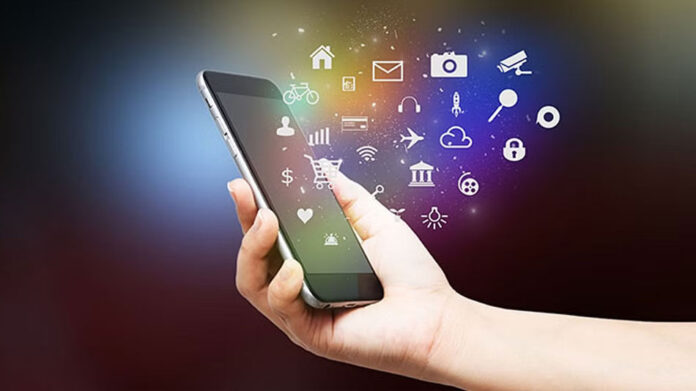Table of Contents
Let’s dive deep into the world of mobile app magic – the kind that keeps users hooked. Think of these strategies as the irresistible charm of your app. Whether you’re an app-making pro or just dipping your toes into mobile app development, here’s how to whip up an experience users can’t resist.
Simplify Onboarding
The first impression counts, and in the world of mobile apps, that means nailing the onboarding process. Here’s how to make it seamless:
Minimalist Registration: Ask for only the essential information during registration. People get turned off by lengthy forms.
Guided Tour: Provide a brief guided tour of your app’s key features. Show users what they can do right away.
Easy Navigation: Ensure intuitive navigation with clear buttons and menus. Make it a smooth ride, not a maze.
Create a Stunning UI/UX
Your app’s appearance and how it feels in users’ hands matter a lot. An attractive and user-friendly design keeps users hooked:
Clean Design: Use a clean and uncluttered design. Nobody likes a chaotic interface.
Consistent Branding: Stick to a consistent color scheme and typography. It reinforces your brand’s identity.
Responsive Layout: Ensure that your app works smoothly on different screen sizes and orientations.
Personalization is Key
Users love feeling special, so give them a tailored experience:
User Profiles: Allow users to create profiles with customization options. It makes them feel more invested in your app.
Recommendations: Use algorithms to suggest content or products based on their previous interactions. Netflix and Amazon have perfected this strategy.
Personalized Messages: Send push notifications and in-app messages that address users by their names. It adds a personal touch.
Engage Through Gamification
Gamification is the art of turning user engagement into a game:
Achievements and Badges: Reward users for completing tasks or hitting milestones. Gamify the experience by unlocking badges or trophies.
Leaderboards: Create leaderboards to encourage competition among users. Everyone wants to be at the top.
Challenges and Contests: Organize challenges or contests that require users to engage actively with your app. Offer prizes or recognition.
Push Notifications Done Right
Push notifications can either be your best friend or your worst enemy. Use them judiciously:
Personalized Alerts: Send notifications that are relevant to the user’s interests or past interactions.
Frequency Control: Let users decide how often they want to receive notifications. Respect their choices.
Timing Matters: Avoid sending notifications during the middle of the night or during a work meeting. Timing is crucial.
In-App Messaging
In-app messaging is a powerful tool for user engagement:
Customer Support: Provide a way for users to ask questions or seek assistance within the app.
Feedback Loops: Encourage users to give feedback and respond to it promptly. It shows you care about their opinions.
Regular Updates and Bug Fixes
Keeping your app fresh is essential. Regular updates not only add new features but also show users that you’re committed to making their experience better:
Feature Additions: Continuously improve your app by adding new features that enhance its functionality.
Bug Fixes: Don’t ignore bugs; squash them ASAP. Users get frustrated with glitches.
User Feedback: Listen to what users have to say and prioritize their most requested features or improvements.
Social Media Integration
Leverage the power of social media to boost engagement:
Shareable Content: Allow users to easily share their achievements or content from your app on social media platforms.
Login with Social Media: Enable users to log in using their social media accounts. It simplifies the registration process.
User Communities: Create a space for users to interact and discuss topics related to your app. Reddit and Discord are great examples.
Analytics and User Data
Data is your best friend when it comes to understanding user behavior:
Analytics Tools: Use analytics tools to track user actions within your app. Understand what features are popular and which ones need improvement.
A/B Testing: Experiment with different versions of your app to see what works best. A/B testing can reveal valuable insights.
Offline Accessibility
Not everyone has a stable internet connection all the time. Ensuring offline accessibility can be a game-changer:
Offline Mode: Allow users to access certain features or content even when they’re offline.
Syncing: When the internet connection is back, sync their data seamlessly.
Progress Saving: Make sure users don’t lose their progress in tasks if they lose internet connectivity.
Incentives and Rewards
Who doesn’t love freebies or discounts? Incentives and rewards can keep users engaged:
Discounts and Coupons: Offer special discounts or coupons to loyal users.
Loyalty Programs: Implement loyalty programs that reward users for their continuous engagement.
App Performance Optimization
A slow and buggy app can quickly turn users away:
Speed: Optimize your app for speed. Slow load times can frustrate users.
Battery Efficiency: Ensure your app doesn’t drain the user’s battery excessively.
Exit Strategy
Sometimes users will leave your app, and that’s okay. But you can still make their exit a positive experience:
Feedback on Exit: Ask users for feedback when they decide to uninstall your app. Use this information to improve.
Re-Engagement Offers: Offer special deals or incentives when they decide to return.
Conclusion
User engagement is a dynamic process that requires constant attention and adaptation. So, go ahead and apply these strategies to make your mobile app a user magnet!















